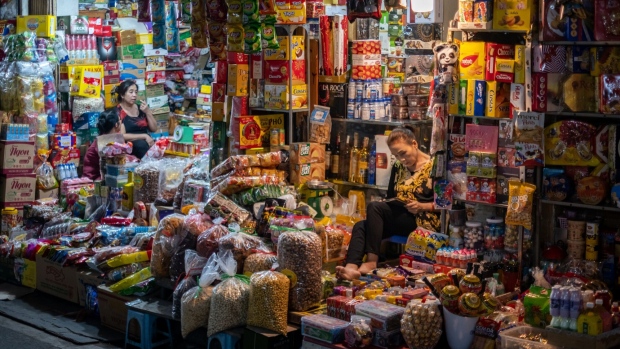Mar 31, 2023
Vietnam Central Bank Signals Room for More Interest Rates Cuts
, Bloomberg News

(Bloomberg) -- Vietnam’s central bank signaled that more reductions in its policy rates are in the cards to support an economy showing signs of strain while inflation is on course to meet the target and the currency is stable.
State Bank of Vietnam will be able to consider more monetary easing, Pham Chi Quang, head of monetary policy at SBV, said in a briefing in Hanoi Friday, citing inflation that will meet this year’s 4.5% goal while credit growth is sluggish.
Conditions are favorable “for the SBV to consider further reductions in policy interest rates, and also direct banks to lower their deposit interest rates and their commercial lending interest rates in the near future,” Quang said.
The signal comes as inflation slowed for a second straight month in March and just weeks after the monetary authority cut one of its key rates to reduce banks’ cost of funds, and in turn make loans cheaper. The SBV also nudged banks on Friday to reduce commercial lending rates to support businesses, spur credit demand and domestic activity as economic growth slowed in the first quarter.
The central bank, which uses a combination of rates to guide its monetary policy, last year raised its key rates twice after the local currency slumped to a record low. On March 14, it cut the discount rate by 100 basis points to 3.5% but kept the refinancing rate unchanged at 6%.
Gross domestic product growth slowed to 3.32% in January to March from 5.92% in the last quarter of 2022 as exports, manufacturing and construction slumped.
Vietnam’s trade-reliant economy is taking a hit as tighter monetary policies globally dampen demand, mirroring a trend in Asian export powerhouses, including South Korea and Taiwan. At the same time, the impact of government crackdowns reverberating in Vietnam, including in the property sector, is becoming visible in an economy that rarely posts below 5% growth pre-pandemic.
“If SBV does cut interest rate again in next few weeks they would need to factor in the current uncertain outlook on inflation as well as any potential impact on the currency,” said Ruchir Desai, co-fund manager of the AFC Asia Frontier Fund. Desai earlier said there was a greater possibility that SBV will tell banks to reduce lending rates instead of cutting its benchmark rates again so soon.
The dong traded at 23,476 per dollar as of 4:40 p.m. local time. The currency has gained 1.3% this month, on course for its biggest monthly advance since December, according to data from banks compiled by Bloomberg. It fell 1.4% last month.
--With assistance from Cecilia Yap.
(Updates with analyst comment and market performance.)
©2023 Bloomberg L.P.






